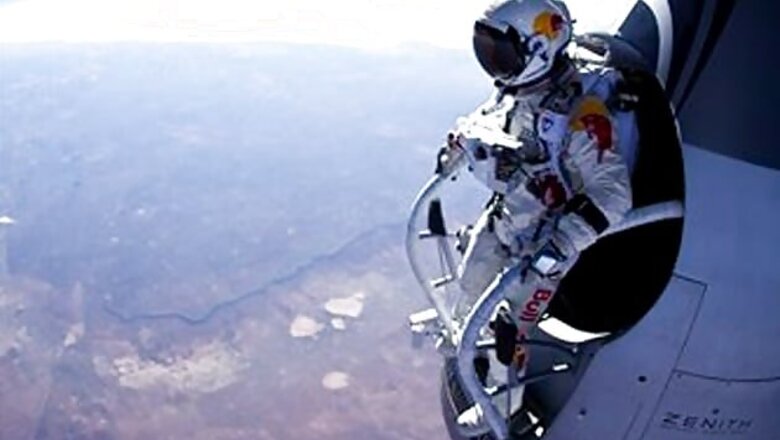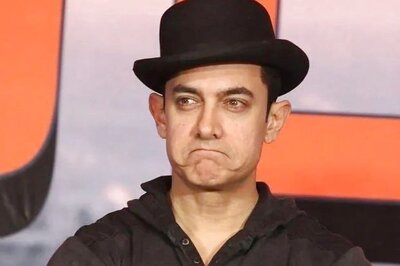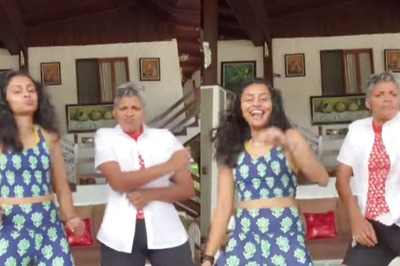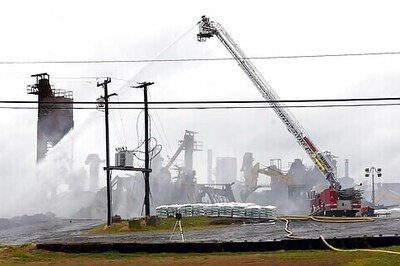
views
Roswell (New Mexico, USA): A weather hold that threatened to cancel extreme athlete and skydiver Felix Baumgartner's death-defying, 23-mile (37 km) free fall into the southeastern New Mexico desert has been lifted. The planned 7 am launch on Tuesday was delayed by high winds.
However, just before 9 am, the winds calmed and the team decided to proceed with plans to begin the launch, a process that would take about two hours. Crews began laying out his balloon.
The 43-year-old former military parachutist from Austria plans to take off in a 55-story, ultra-thin and easy-to-tear helium balloon that will take him into the stratosphere for a jump. He hopes it will make him the first skydiver to break the sound barrier and shatter three other world records.
Among the risks: any contact with the capsule on his exit could tear the pressurised suit. A rip could expose him to a lack of oxygen and temperatures as low as 70 degrees below zero. It could cause potentially lethal bubbles to form in his bodily fluids, a condition known as "boiling blood." He could also spin out of control, causing other risky problems.
The energy drink maker Red Bull, which is sponsoring the feat, has been promoting a live Internet stream of the event at http://www.redbullstratos.com/live from nearly 30 cameras on the capsule, the ground and a helicopter. But organizers said there will be a 20-second delay in their broadcast of footage in case of a tragic accident.
Despite the dangers and questionable wind forecast, high performance director Andy Walshe said the team was excited, not nervous. Baumgartner has made two practice jumps, one from 15 miles in March and another from 18 miles in July.
"With these big moments, you get a kind of sense that the energy changes," he said Monday. "It really is just kind of a heightened energy. It keeps you on your toes. It's not nervousness, it's excitement."
During the ascent, Walshe said, the team will have views from a number of cameras, including one focused directly on Baumgartner's face. Additionally, they will have data from life support and other systems that show things like whether he is getting enough oxygen.
The team also expects constant communication with Baumgartner, although former astronaut Joe Kittinger, whose 1960 free-fall record from 19.5 miles (31 kilometers) Baumgartner hopes to break, is the only member of mission control who will be allowed to talk to him.
And while Baumgartner hopes to set four new world records, his free fall is more than just a stunt. His dive from the stratosphere should provide scientists with valuable information for next-generation spacesuits and techniques that could help astronauts survive accidents.
Jumping from more than three times the height of the average cruising altitude for jetliners, Baumgartner's expects to hit a speed of 690 mph (1,110 kph)or more before he activates his parachute at 9,500 feet (2,895 meters) above sea level, or about 5,000 above the ground in southeastern New Mexico. The total jump should take about 10 minutes.
His medical director is Dr Jonathan Clark, a NASA space shuttle crew surgeon who lost his wife, Laurel Clark, in the 2003 Columbia accident. No one knows what happens to a body when it breaks the sound barrier, Clark said.
"That is really the scientific essence of this mission," said Clark, who is dedicated to improving astronauts' chances of survival in a high-altitude disaster.
Clark told reporters on Monday he expects Baumgartner's pressurized spacesuit to protect him from the shock waves of breaking the sound barrier. If all goes well and he survives the jump, NASA could certify a new generation of spacesuits for protecting astronauts and provide an escape option from spacecraft at 120,000 feet, he said.
####


















Comments
0 comment